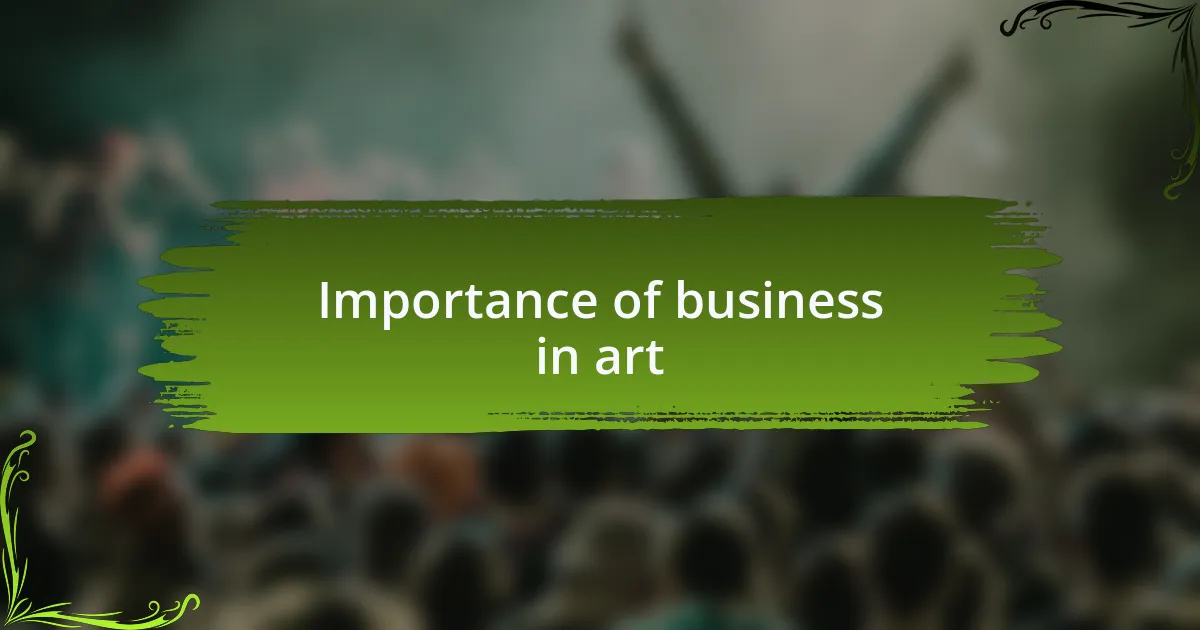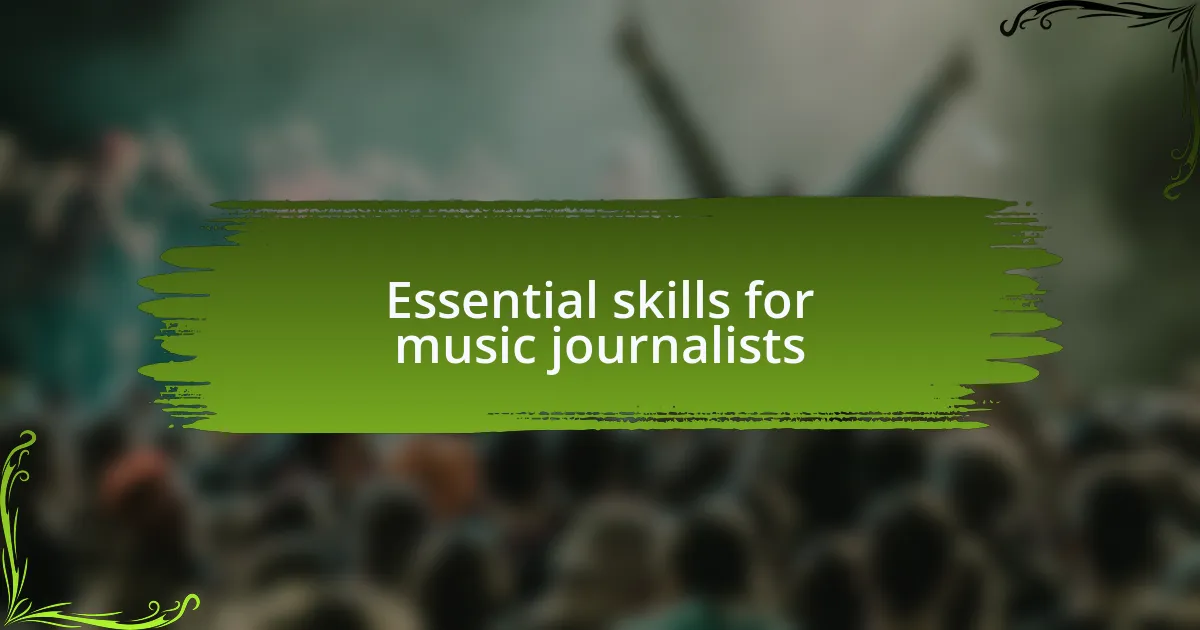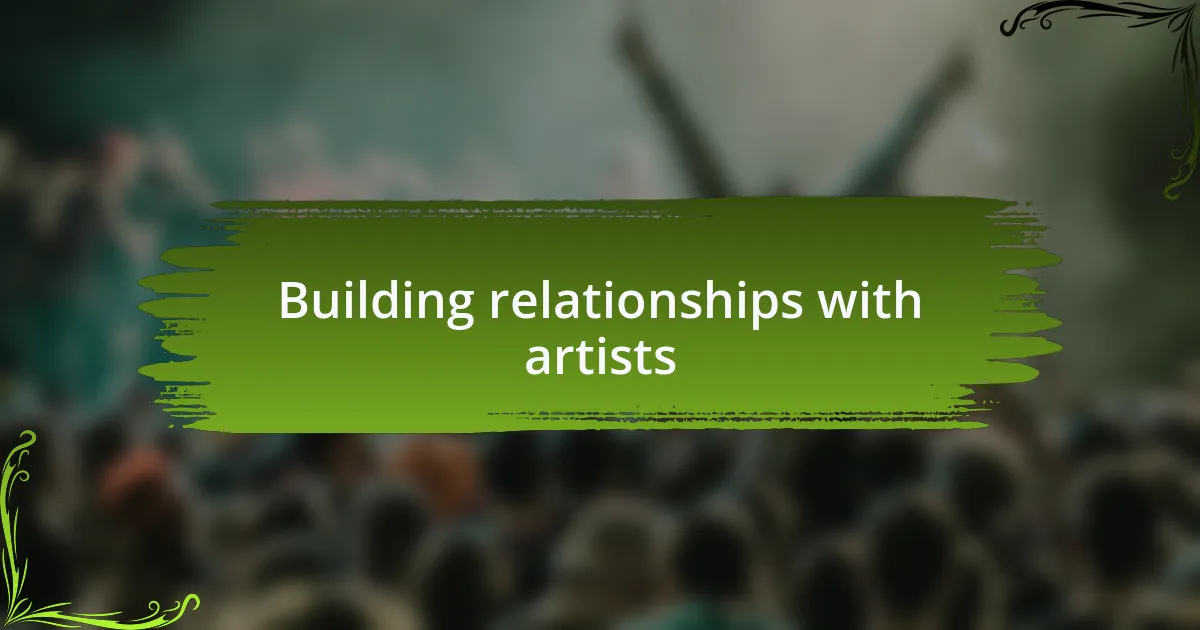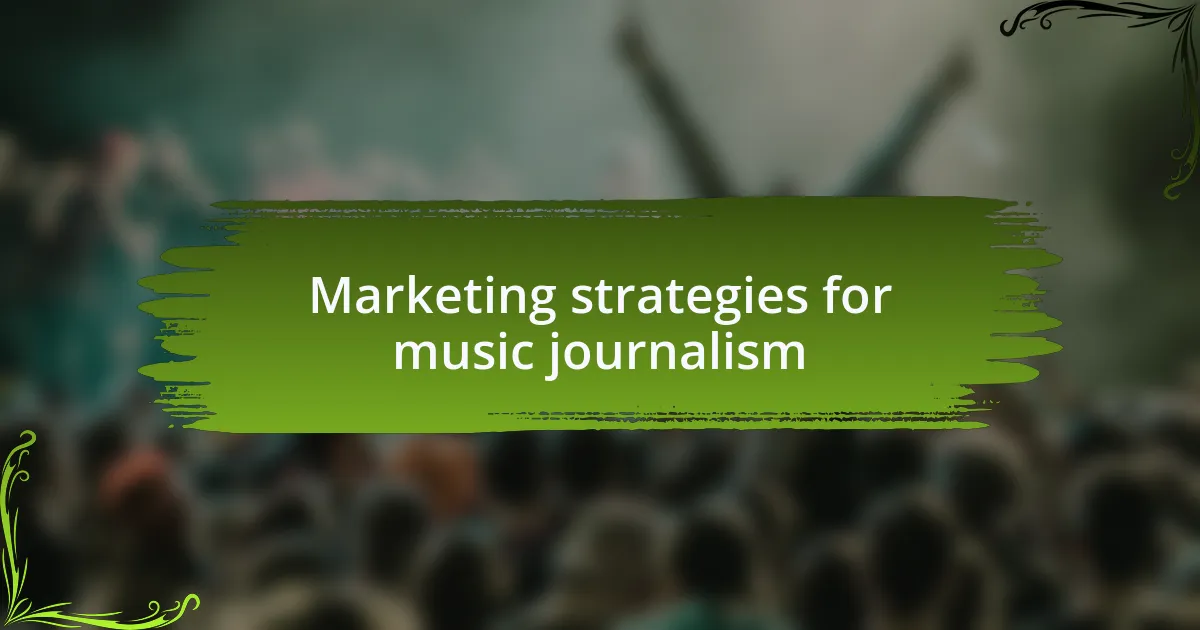Key takeaways:
- Music journalism combines storytelling and critique, influencing how audiences connect with music and artists.
- Understanding the business side of art, including contracts and marketing, is crucial for artists’ success and sustainability.
- Communication, research, and adaptability are essential skills for thriving as a music journalist.
- Building genuine relationships with artists enhances storytelling and enriches the journalism experience.

Understanding music journalism
Music journalism is a unique blend of storytelling and critique, serving as a vital bridge between artists and their audiences. I vividly remember my first concert review; the excitement coursing through me as I captured the essence of the performance in words. It made me realize how my passion for music could influence others’ listening experiences.
At the heart of music journalism lies the responsibility to convey not just facts, but the emotions and narratives surrounding the artists and their work. Have you ever read a review that moved you to explore a new artist? That’s the power we hold as journalists: we shape the conversation about music.
Moreover, the ever-evolving music landscape demands that we stay agile and informed. I often find myself diving into various genres unfamiliar to me, which not only broadens my understanding but also ignites my creativity. This continuous exploration fuels my passion for writing, offering insights that resonate with readers seeking authentic connections with the music they love.

Importance of business in art
Art and business are intertwined in ways that can deeply shape an artist’s career and impact. I still recall the moment I realized that talent alone doesn’t guarantee success; understanding contracts, royalties, and marketing strategies can make or break an artist’s journey. Have you ever seen an incredible band struggle to find their audience simply because they lacked the knowledge to promote themselves effectively?
Navigating the business side of art isn’t just about finances—it’s about preserving one’s creative vision while ensuring sustainability. I remember working with an indie artist who poured their soul into their music, yet felt overwhelmed by the intricacies of setting up a label. By offering to help them decipher industry jargon and create a strategic plan, I saw their confidence soar and their artistry flourish.
The importance of business in art also lies in fostering partnerships and connections that can lead to new opportunities. I’ve experienced firsthand how networking opened doors for collaborations that enhanced my writing and enriched the narratives I share. When you understand the value of relationships in the art world, you realize that business acumen can amplify the voice of creativity in extraordinary ways.

Essential skills for music journalists
To thrive as a music journalist, honing your communication skills is crucial. I often find myself crafting narratives that resonate with both the artist’s vision and the audience’s experience. Have you ever tried to capture the essence of a song in just a few sentences? It’s a challenge that demands precision and empathy, as your words can influence how music is perceived.
Research proficiency also stands out as an essential skill. I vividly recall a time when I was tasked with writing a piece on a lesser-known genre. Delving into its history not only deepened my appreciation but also enriched my writing. I learned that the depth of knowledge you bring to your articles makes them more engaging and informative. It’s not just about what you know; it’s about how effectively you convey that knowledge.
Lastly, adaptability is key in this ever-changing landscape. I remember attending a press conference that took an unexpected turn when an artist revealed personal struggles behind their latest album. I had to pivot my planned questions and respond with sensitivity and insight. Being adaptable means seizing these moments to connect more deeply with the artist and your audience. How well do you adjust your approach when faced with the unexpected? This flexibility can set you apart in a competitive field.

Navigating financial aspects of music
Navigating the financial aspects of music can feel daunting, especially when you’re an artist trying to manage expenses and income streams. I vividly remember my early days covering a local band. They poured their savings into recording an album but struggled to break even after its release. This experience highlighted for me the importance of understanding budgeting, not just for artists, but for journalists too, as we often need to research and present these financial realities to our audience.
One critical area that often goes unaddressed is the variety of revenue sources in music. I’ve seen artists diversify their incomes through merchandise, live performances, and streaming royalties. Have you ever thought about how a single concert can turn into a profitable venture? I once attended a gig where the band not only sold out the venue but also generated significant income from merchandise sales. It was a powerful reminder that smart financial planning can turn creative passion into a sustainable business.
Awareness of industry trends is equally essential—it’s vital to track how changes in streaming services affect artist revenue. A few years back, I found myself analyzing the impacts of a major platform’s new payout structure. I presented my findings, illustrating how it affected up-and-coming artists. This experience taught me that being in tune with economic shifts not only shapes your reporting but also empowers artists and contributes to a more informed music community.

Building relationships with artists
Building relationships with artists is a pivotal aspect of my experience in music journalism. I recall sitting down for coffee with an emerging singer-songwriter whose raw talent captivated me immediately. As we talked about her struggles in a competitive industry, I realized how crucial it is to establish a genuine connection that goes beyond just interviews or feature stories. This bond allows artists to share their authentic selves, leading to richer stories that resonate with audiences.
Listening plays a tremendous role in nurturing these relationships. Once, as I chatted with a local band about their latest project, I noticed how my questions encouraged them to delve deeper into their creative process. Their eyes lit up as they spoke about their inspirations and aspirations, which not only enhanced my article but also forged a sense of trust. Have you ever experienced that moment when someone opens up to you because they feel safe? It makes all the difference.
Collaboration can elevate these artistic connections even further. I once proposed a joint project with an artist, blending journalism and art in a way that showcased her music and storytelling. This partnership not only broadened my audience but also allowed her to express her vision more fully. Such experiences remind me that building relationships isn’t just about networking; it’s about creating spaces for mutual growth and understanding in the vibrant world of music.

Marketing strategies for music journalism
Effective marketing strategies for music journalism often hinge on authentic storytelling. I recall writing a piece on a genre-defying band that challenged conventions. Instead of merely presenting facts, I infused my narrative with vivid imagery of their live performance, which echoed in my mind long after the show. This emphasis on storytelling not only sparked engagement but also helped the piece stand out in a crowded marketplace. Have you ever found a story that just stuck with you? That’s the magic of a well-crafted narrative.
Social media is an indispensable tool for promoting music journalism. I’ve experienced firsthand how strategic posts can amplify reach and foster community. There’s a thrill in sharing a behind-the-scenes glimpse of an artist’s creative process or an exclusive interview snippet. I remember tweeting a short quote from a vibrant dialogue with a local rapper, and it went viral, resulting in a flurry of new followers eager to connect with my content. It’s a reminder that captivating snippets can draw readers in and encourage them to explore the full articles.
Finally, leveraging partnerships with other media and artists can amplify one’s voice in music journalism. I once collaborated with a local radio station to co-host a segment featuring fresh talent. This partnership not only broadened my audience but also introduced listeners to the artistry in the feature stories, enriching the listening experience. How could your own network of relationships enhance your reach? Sometimes, the best opportunities come from unexpected alliances that create a richer narrative landscape for everyone involved.